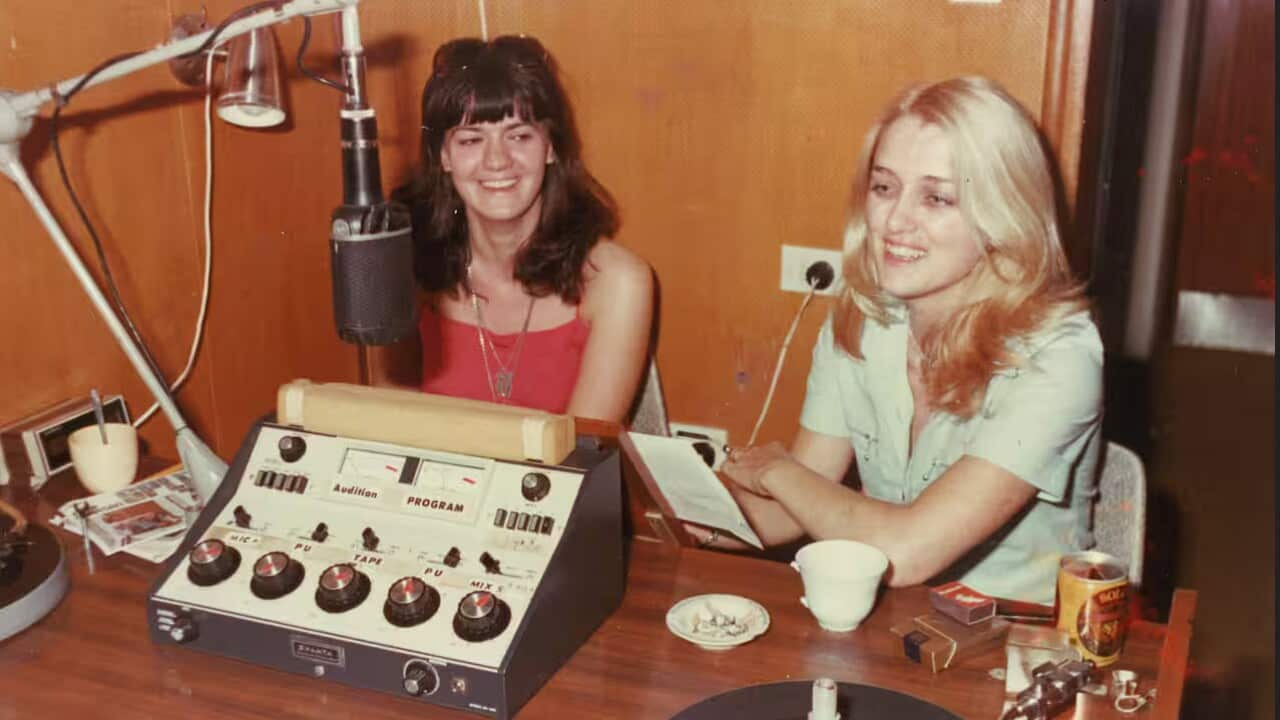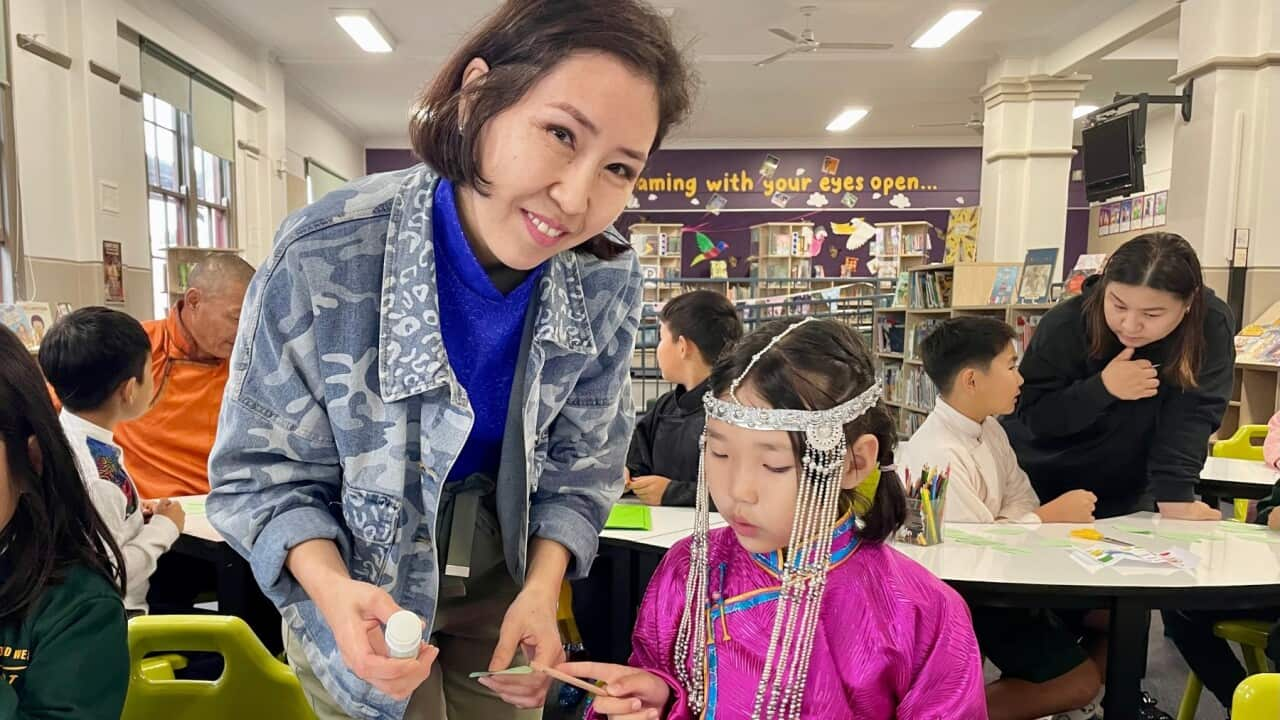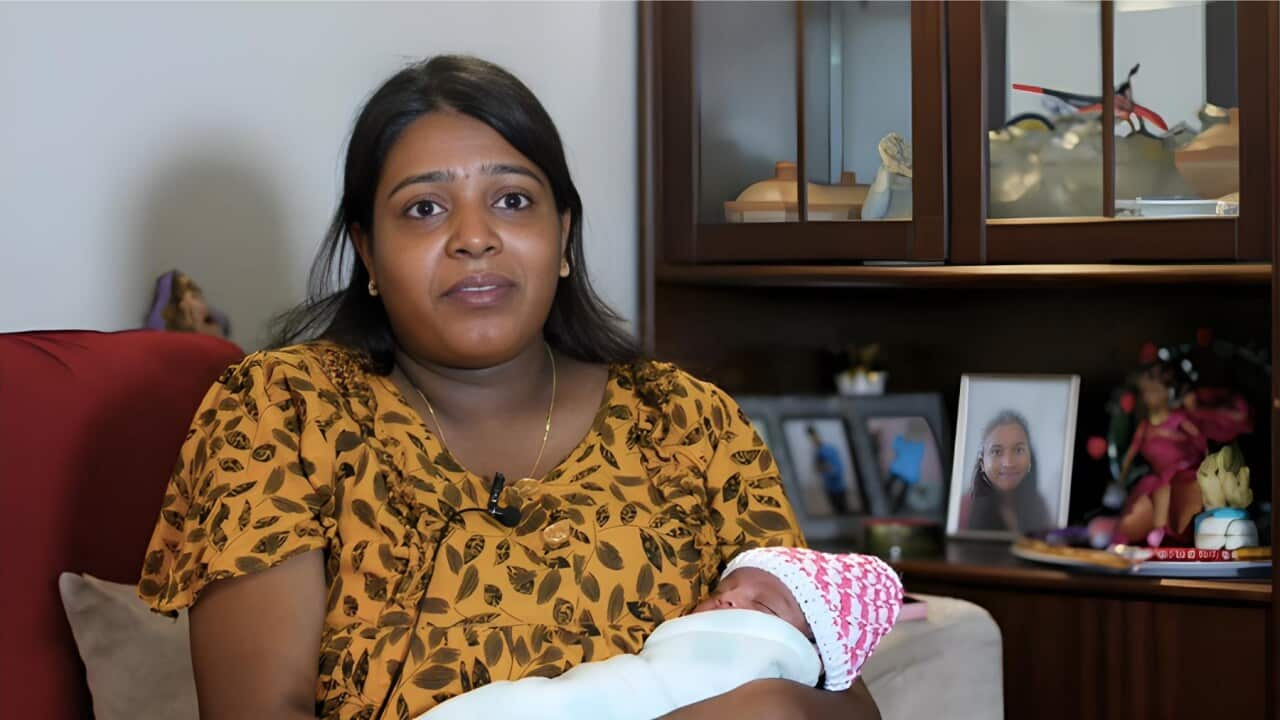TRANSCRIPT
"This is Al Grassby on behalf of the Australian community relations office welcoming you all to radio 2EA, the voice of ethnic Australia. Today the program is in Greek."
That was 1975 and the first broadcast of what is now SBS Audio.
The first in-language broadcasts on radio 2EA, short for Ethnic Australia, included Arabic, Greek, Italian, Maltese, Spanish and Yugoslav programs.
Now, snippets from the earliest broadcasts are part of ten new additions to the National Film & Sound Archive’s Sounds of Australia collection.
"The Sounds of Australia Collection is an annual gathering of about 10 iconic sounds by the National Film and Sound Archive. It's an annual register of sound recordings that have cultural, historical, aesthetic, or significance for the Australian way of life that inform or reflect life in Australia."
That's the NFSA's Chief Curator, Meagan Loader.
The sounds are nominated by members of the public and then voted on by a panel of industry and NFSA sound experts.
SBS Audio and Language Content Director, David Hua, says it's an honour to be included in the collection.
He says the moment highlights how much has changed - with SBS now publishing content on multiple platforms in more than 60 languages.
"So we've transformed almost to the point of not being able to recognise a lot of what we might be doing, and listening back to some of the audio where it all first started, gosh, it's such a incredible insight into our purpose at that time and actually what our purpose remains right now too."
The initial purpose of SBS radio was to inform multilingual communities about proposed changes in the healthcare system brought by the new Medibank scheme - now known as Medicare.
But within two years the production of in-language content was rapidly expanding.
Mr Hua says it was clear language programs were helping to connect communities.
"There's a beautiful story about when SBS was first broadcasting and there was - legend has it - that there was a truck driver who was of Turkish heritage and turning the dial as it were in the car radio, the truck radio, and then heard Turkish... and he stopped the truck in the middle of a busy intersection and just started to dance out of pure exuberance at feeling connected, at feeling at home, at feeling like he belongs."
Meagan Loader says it's wonderful to be able to induct the birth of multicultural broadcasting in Australia into the collection.
She says each recording begins with an intro by Al Grassby, a former immigration minister who worked to remove a ban preventing radio stations from broadcasting more than two and a half hours per week in a foreign language.
"So it was post (after) the White Australia policy, and as we saw post-World War II immigration really ramp up in Australia, it was so important to have a multicultural multilingual broadcaster. So really, really exciting to find these recordings and to celebrate 50 years since that moment, which will be happening next year."
As for the other sounds included in the collection, they range from iconic speeches to a recording of a now-extinct bat.
Ms Loader says it was a difficult task selecting just 10 recordings.
"Australia is such a diverse country, there's so many stories to capture. So we try and ensure that we are finding diverse stories that represent all the diverse experiences of our history."
Part of that history is a speech by leading Australian feminist Jessie Street - the only female Australian delegate at the founding of the United Nations in San Francisco.
"I'm very pleased to have the opportunity of addressing American women on the work of the women in the conference that we have recently been attending."
In her address, she discusses a desire to secure the insertion of the word 'sex' into the clause 'without distinction as to race, sex, language or religion' wherever it occurred in the Charter of the United Nations.
Ms Loader says there is also a beautiful set of recordings from Muruwari man Jimmy Barker.
"Jimmy Barker was the first Aboriginal Torres Strait Islander Australian to use recorded sound as a way of preserving his culture. So Aboriginal culture, and this is a collection that is held by the Australian Institute of Aboriginal Torres Strait Islander studies. It's about a hundred hours of audio across 21 collections."
And audiences may also recognise this iconic voice...
"As a child growing up I dreamt big. Most people would have looked at an Aboriginal girl from the Territory with the statistics of alcohol abuse, youth suicide, domestic violence, imprisonment rates and sub-standard education, point to every reason why I should not succeed. But I was determined to be successful."
...with the collection also including Nova Peris - a decorated athlete and Australia's first Aboriginal woman elected to Federal Parliament - giving her maiden speech.
There are also some serious earworms in this year's selection ...
(the Vic beer ad)
Tina Arena's pop song 'Chains' has also made it in, as well as the first Australian hip hop song to reach the Top 20 - ‘Kickin’ to the Undersound’ - and the Doctor Who Theme Song, which was written by Australian composer Ron Grainer.
Perhaps less familiar to younger Australians is the inclusion of recordings from 'the talking clock' - a dial-up service that gave the correct time long before the magic of digital devices.
Finally, among this year's collection is the last single ultrasonic audio recording of the Christmas Island Pipistrelle, a now-extinct three-gram microbat endemic to Christmas Island.
Ms Loader says the most important part of the NFSA is its ability to help preserve sounds forever.
" I think the value of audio is that it can take you to a place, such as with the bat. We couldn't catch an image of the bat, we couldn't take you to the moment and film that last bat. But with the sound of it, there's something magic about the sound that allows your brain to kind of immerse yourself and bring your own image of a moment or a scene or an event."













